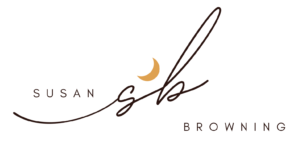Anything worth pursuing is often only acquired over time through hard work and many micro steps to build it to a place where strength and health reside. I’ve found over the years there are many factors that contribute to how my voice functions. For me and many I’ve taught it might look like how much sleep you have had the night before, if you are sick or still recovering, how often you are using your voice (correctly…), or maybe if you’re pregnant/just had a baby; Sometimes the season of the year you are in for example we’re entering into winter where we are exposed to the likelihood of getting a cold or fighting off illness etc., or you might find the surrounding level of air conditioning in the environment you sing in can really dry your vocal cords out. And even the expectation you place on your voice to perform and how far your knowingly or unconsciously push yourself, or if you’ve had coffee or dairy or have a re-flux condition it’s a push to get your ideal tone. The importance of looking after your voice is one we should never underestimate – so I thought I’d share a few practical elements of what I do in my day to day to keep my voice in top condition.
Daily Warmups
Because the voice is not limited to our vocal chords in our larynx we need to be mindful of how our whole body interacts with the way we sing and many of my clients often find tension in the shoulders, neck, jaw or tongue play a significant role in inhibiting their best voice at any given time.
Stretch your whole body:
Yoga has been a useful tool for me, I’ve found it releases the rib cage and lower back but as I’m not an expert in that field I’ll share with you some other stretches which I’ve found helpful!
Neck Stretching – lower your head chin to chest, then move your chin upward to ceiling. Re-center then move tilt head toward one shoulder then center and to the other shoulder. All holding for about 5-10 seconds without pushing yourself to pop or crack the neck.
Shoulders – Roll your shoulders forwards a few rotations then backwards a few rotations. Your posture for singing is ideal when you roll your shoulders about halfway back and then relax.
Back – Arms to the ceiling, clasp hands together and reach further toward the ceiling then move to one side – whilst maintaining the hands in a clasped grip, hold for a count of 10. Recenter and then move to the other side, hold for a count of 10. Recenter. You can repeat this if you like and try to get further on each side. I find this one of my favourites as I hold a lot of tension in my upper torso! Next, lift arms to the ceilings then straight to as low as you can go in an effort to touch your toes. Relax and move around a little then move forward to try to touch your toes, further stretching the back of your legs also. Come up at a slow pace, piecing one vertebra one at a time until you are upright.
Jaw – Slowly run your fingers up along your jaw line (starting just above the hinge) toward your temple – applying gentle pressure, and gradually open the mouth as you do so.
Mouth – Run your tongue along your teeth pushing outward to the lips. Or using pincer grip (forefinger and thumb) trace the inside of your cheek (one at a time) from the top teeth line create a C shape back towards the jaw tracing it as your gently apply pressure to allow any release from the jaw muscles.
Always be sure to slowly wake up the vocal cords and lips…
A great way to slowly wake up the voice before going into any full vocal warm-up is to faux-yawn or siren with a relaxed onset. I do this sometimes when I am in my morning routine and stretch my jaw as well. Keep in mind to never allow the sound to break, you want it to be a smooth ascend and descend. Start from a comfortable talking range pitch then gradually move higher, remembering to always stay within what is comfortable and pure sounding. Then on each repetition increase the range of pitch. This is a really great exercise that can be repeated often for 10 minutes and will help you initially warm up if you have a vocally demanding day.
Trilling with the lips (bw) or the tongue (rr) are great exercises that doesn’t require a set pitch or an instrument – simply pick your starting note and ascend then descend. You could also humming (mm or nn) keeping in mind to always be bringing the vibration of sound forward to the front of the face.
Finish it off with a cup of herbal tea and then you can get on your way to doing a full vocal workout! Stay tuned!
Until next time… xox
